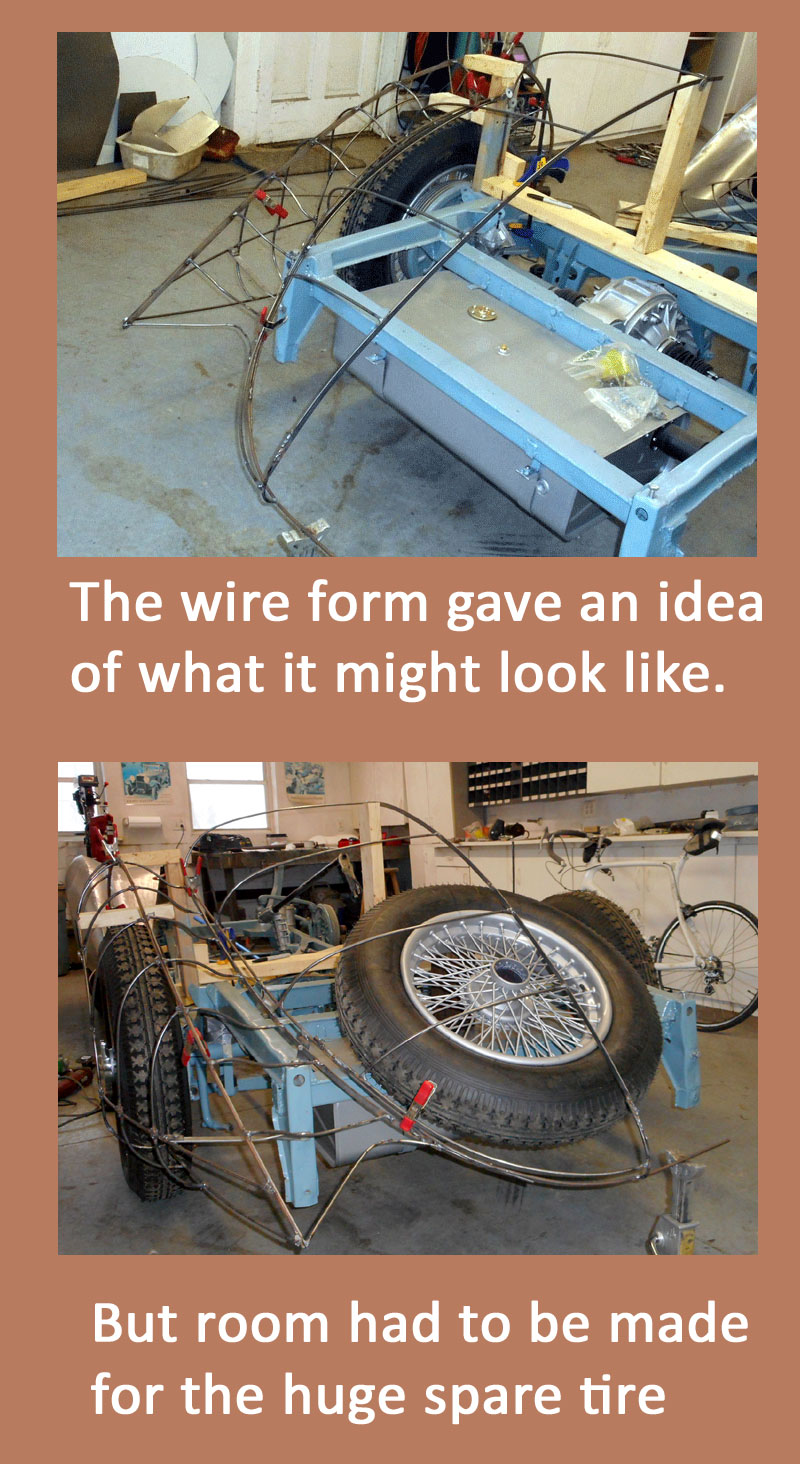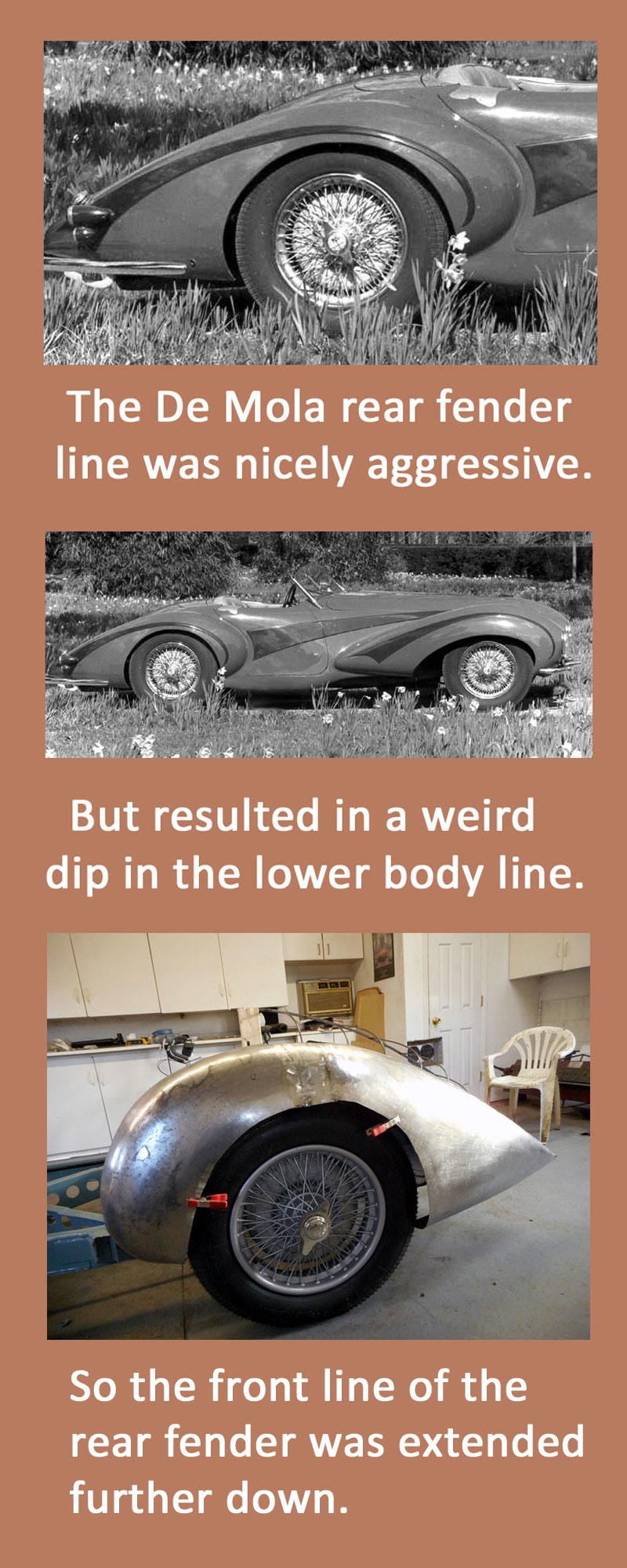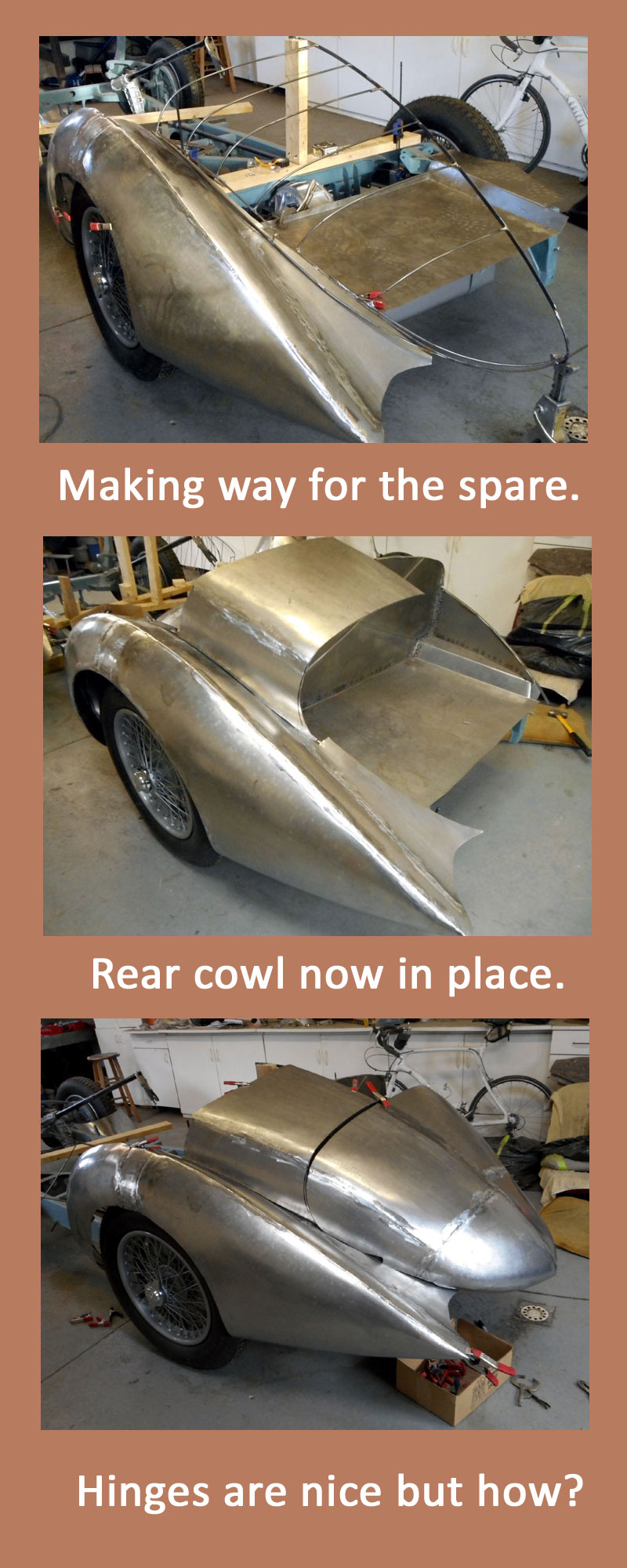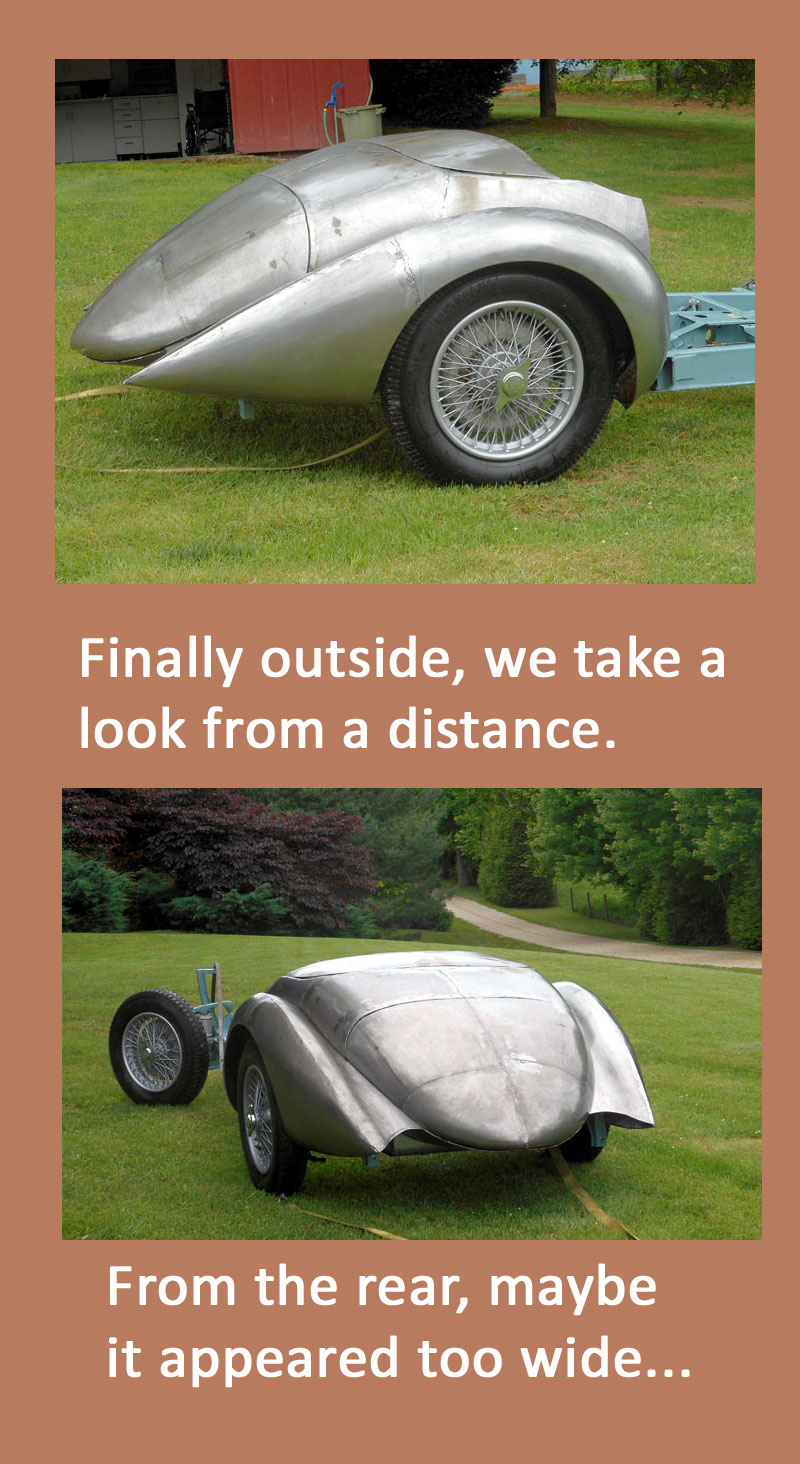Story by Paul Wilson
My “one-man band” system of designing and building a custom body has obvious defects. The lone worker is going to get overwhelmed. And at best, he’s slow. But with many people involved, how does the designer explain what he has in mind? With just a few drawings, how does the builder know what to make? And if what emerges doesn’t look right, how can mistakes be corrected? Without seeing the full-sized car, in the flesh, how could any designer anticipate what it will look like from every angle?
These are such critical questions that Detroit used to make full-sized clay mockups, at extravagant expense, to answer them. At a laughable fraction of the cost, my system–a ghost form made of steel rods, clad with panels added one by one–also previews the final result. But it has the further advantage of allowing changes to be made quickly and easily, so ongoing design decisions can be made during construction.
I used all the benefits of my system when making the rear body for my car. The design was a synthesis of everything I liked from the Darl’Mat and the Alfa 2.9 MM. Three distinct forms–the fenders and the center body–swept rearwards, the fenders to pointed ends, the center to a longer, more rounded shape. The narrow body of the 2.9MM is more dramatic, but that’s a race car. I wanted a cockpit big enough for two modern adults, not the cramped space designed for Nuvolari. So the central fuselage dominates the fenders, which are tapered inward to emphasize the teardrop theme.
The ghost form of steel rods not only gave a preview of the aesthetics but allowed me to check how things fit. For example, the downward-sloping line where the rear fender attaches to the body comes very close to the rear corner of the frame. There has to be room in the trunk for the enormous spare wheel. These problems were only discovered after I’d put together the first draft of the skeleton form. But they were easily solved by some cutting and welding of more steel rods. Evidence of these second thoughts is visible on the final version.
With the rear fenders, I thought I would borrow an idea from the De Mola roadster, a tight curve at the front of the fender ending just below the hub line, not continuing down to the bottom of the rocker panel. It gave a high-shouldered, aggressive stance that looked exciting. It still seemed promising when I made the steel-rod buck. But when I formed the sheet metal over this shape, it suddenly didn’t look so good. The high front didn’t match the low rear. And I could see that the low sides of the middle body would hang like a sow’s belly between the front and rear fenders.
For the first time, I noticed that the De Mola designer struggled with the same problem, putting a weird dip in the lower body line that made things worse. Once diagnosed, the error was quickly corrected. It took perhaps an hour to modify the buck so the fender front would extend further down. I cut the sheet metal, clamped the front and back parts to the buck, and welded in a connecting piece. Now it looked right.
With the body forms defined by the steel-rod buck, it was a relatively straightforward job to design and build the inner structure–trunk floor, inner fenders, and bulkhead–and add the sheet metal. I chose the word “straightforward” carefully: I didn’t say it was quick. It took a whole winter’s work to make the rear body. And some things weren’t even straightforward, to be honest. Hinges, for example: they are quite a puzzle to work out. What do you attach them to, if all you have is a sheet metal shell? And how do you design them so the trunk lid lifts straight up instead of rubbing at the gap? How should they be shaped not to interfere with the body when the lid is open? I get impatient with those half-hour TV shows about car restoration, where with five minutes left, a guy says “At this point, all we had to do was finish it,” and moments later, you see the perfect result. In real life, it isn’t that way.
It was nearly summer before I could take the car outside and see what the finished rear body looked like from a distance. The fenders were graceful, and viewed from the side, they combined well with the arc of the center body. The lower profile of the three-part tail improved on the Darl’Mat with its rounded center linked by arched panels to the fenders. Under the car, ugly vertical frame sections were now exposed, but the visible lower parts had no function and could be cut off.
So far, so good. But viewed from the rear, the trunk lid and center body were too wide, too bland. And this was even before I tried to fit a license plate, a big flat rectangle, into the design without interrupting the sweeping curves. And then there were the taillights, adding to the clutter. Always eager to borrow good ideas from existing cars, I studied a row of cars at Amelia Island with long, tapering rear bodies. Most of their taillights were hideous. And almost none carried any license plate at all.
Was there any good solution to this problem? My struggles will be described next time.






Seems you’ve put the design by design for a continental spare as the 55-57 ford T-bird. Besides making the rear handsome it will leave much space in the boot.
I sure wish I had gone to a technical school instead of wasting time on pre-law ? Way to many kids where forced into so called higher education. It’s nice to see during Covid time’s a complete change in thinking. Home schooling combined with a good skill training is proving to be a better direction then most four year degrees today.
Paul…. I commend you on your design research and struggle to achieve the best solution that not only satisfies your inner minds-eye efforts, but the overall design, as well.
I read each chapter of this trying effort with enthusiasm! As a designer, I struggle with the same quests. As someone that has taken a stock production car and modified it to be a tasteful one-off factory-like creation, I empathize with you.
A very interesting project! Are the articles published in one place?
Well, maybe, we’ll keep you posted.
Editor
Como se llamo esto i am from SPAIN